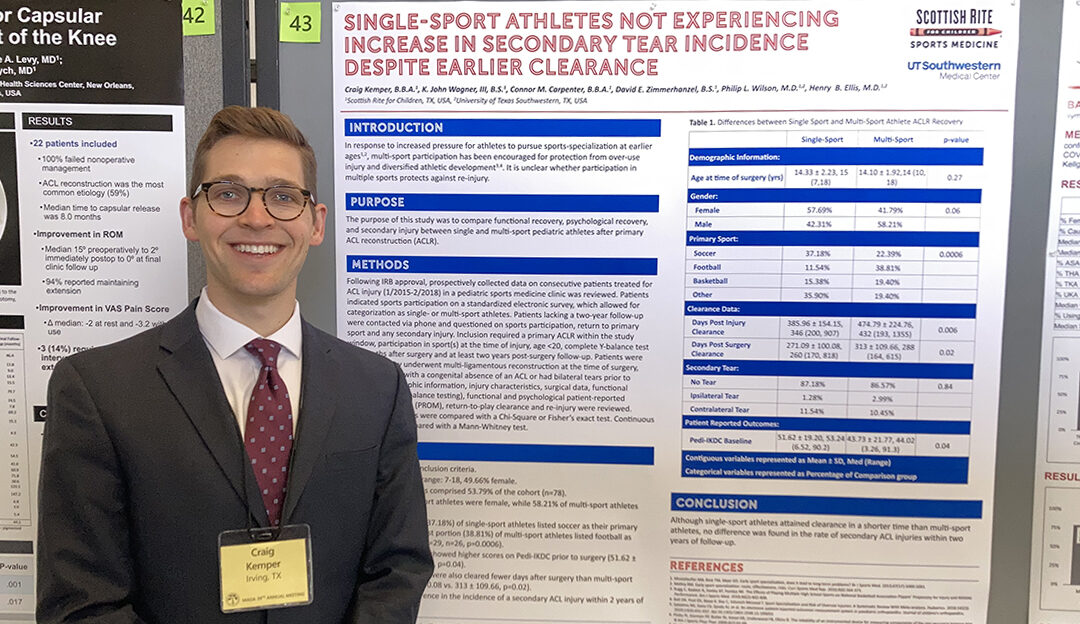
Study Looks at Re-Injury Rate After ACL Reconstruction in Young Athletes
Wrapping up his third year as a medical student at UT Southwestern Medical School, Craig Kemper, B.B.A., has participated in several projects with the Center for Excellence in Sports Medicine research team. Kemper was the lead author on a project looking at athletes who were back to sport after an anterior cruciate ligament (ACL) tear and reconstruction that was recently presented at the 39th annual meeting of the Mid-America Orthopaedic Association. The organization comprises orthopedic surgeons from 20 states, including Texas.
Know a medical student who may be interested in working with our clinical research team? Connect them with Nancy Kleg to learn more!
After surgery for the “primary” ACL tear, as many as 1 in 4 young athletes re-tear the reconstructed ACL or the ACL in the other knee. The rate for these “secondary” ACL tears in young athletes is a concern for researchers and clinicians in pediatric sports medicine. This review included patients seen over three years at Scottish Rite for Children for an ACL tear and reconstruction to determine whether participation in multiple sports protects against re-injury.
The 145 patients in the study were
- an average age of 14 years.
- 50% male, 50% female.
- > 50% reported playing only one sport (single-sport athletes)
- Most played soccer.
- On average, these athletes returned to sports in fewer days than multi-sport athletes.
Kemper says young athletes continue to feel pressured to choose one sport at earlier ages to “not be left behind.” Many recommend multi-sport participation to help an athlete develop varied skills and protect from overuse injuries unique to growing children, including apophysitis and osteochondritis dissecans.
“We give this advice, but we aren’t sure if it applies to this population regarding re-injury after an ACL reconstruction,” says co-author and Medical Director of Clinical Research, Henry B. Ellis, M.D. “The time out of sports is already so long for an ACL tear, we are eager to learn all the variables that contribute to re-injury rates. Other studies have looked at surgical techniques, but this one looks at sport-participation and time to return-to-play.”
Although single-sport athletes were cleared to return to sports in a shorter time than multi-sport athletes, the analysis found no difference in the rate of secondary ACL injuries within two years of follow-up for this group. “Results like this are still helpful and give direction for future projects,” says Ellis. “More importantly, they help me as a pediatric orthopedic surgeon know how to counsel my patients.”
Learn more about ACL injuries on our website.
